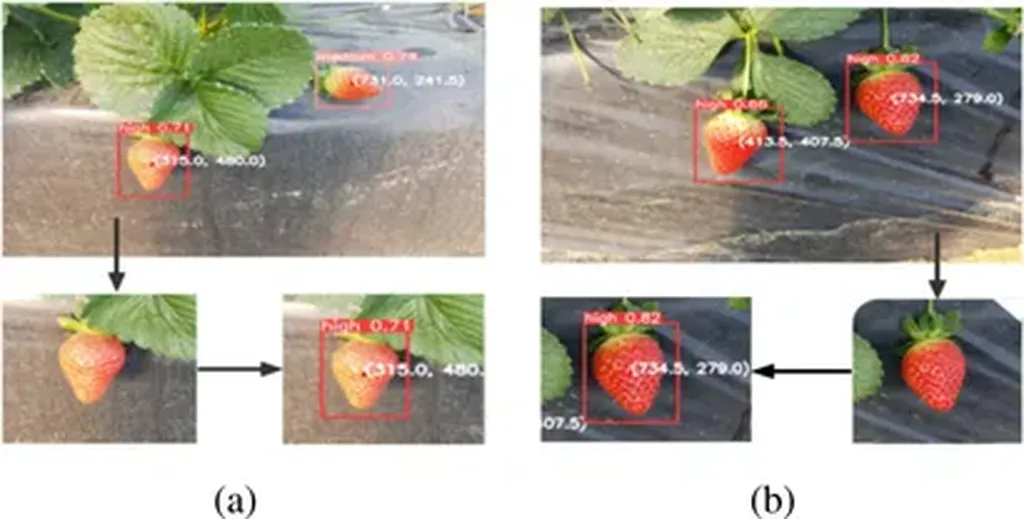In the ever-evolving landscape of smart agriculture, a groundbreaking advancement has emerged from the School of Electronic Information and Electrical Engineering at Chengdu University in China. Led by Hao Teng, a team of researchers has developed DS-YOLO, a lightweight strawberry fruit detection algorithm that promises to revolutionize automated farming practices. This innovation addresses longstanding challenges in strawberry detection, such as leaf occlusion, fruit overlap, and illumination variability, offering a more efficient and accurate solution for growers and agricultural technologists alike.
The DS-YOLO algorithm builds upon the YOLOv8n framework, but with significant enhancements. “We replaced the backbone network with StarNet to reduce the number of parameters while maintaining the model’s feature representation capability,” explains Teng. This modification alone has led to a substantial reduction in computational burden. Further improvements include the replacement of Conv and C2f modules in the Neck section with SlimNeck’s GSConv and VoVGSCSP modules, which enhance detection performance and reduce computational costs. The team also substituted the original CIoU loss function with WIoUv3, improving bounding box regression accuracy and overall detection performance.
The results are impressive. Comparative experiments with six mainstream object detection models, four backbone networks, and five different loss functions showed that DS-YOLO achieves a 1.7 percentage point increase in mAP50, a 1.5 percentage point improvement in recall, and a 1.3 percentage point improvement in precision. In terms of computational efficiency, the number of parameters was reduced from 3.2M to 1.8M, and computational cost decreased from 8.1G to 4.9G, corresponding to reductions of 43% and 40%, respectively.
The implications for the agricultural sector are profound. “Our improved DS-YOLO model enables real-time and accurate detection of strawberry fruits in complex environments with a more compact network architecture,” Teng notes. This advancement provides valuable technical support for automated strawberry detection and lightweight deployment, potentially transforming how growers manage their crops.
The research, published in the journal ‘Agronomy’ (translated from Chinese as ‘Field Cultivation Science’), highlights the potential for similar innovations in other areas of smart agriculture. As the demand for efficient and sustainable farming practices grows, the DS-YOLO algorithm could serve as a blueprint for developing lightweight, high-performance detection systems for various crops. This could lead to increased productivity, reduced labor costs, and more precise resource management, ultimately benefiting both farmers and consumers.
The development of DS-YOLO is a testament to the power of interdisciplinary collaboration and the potential of advanced technologies to address real-world challenges. As the agricultural sector continues to evolve, innovations like DS-YOLO will play a crucial role in shaping the future of smart farming, driving efficiency, and sustainability in an increasingly data-driven world.

